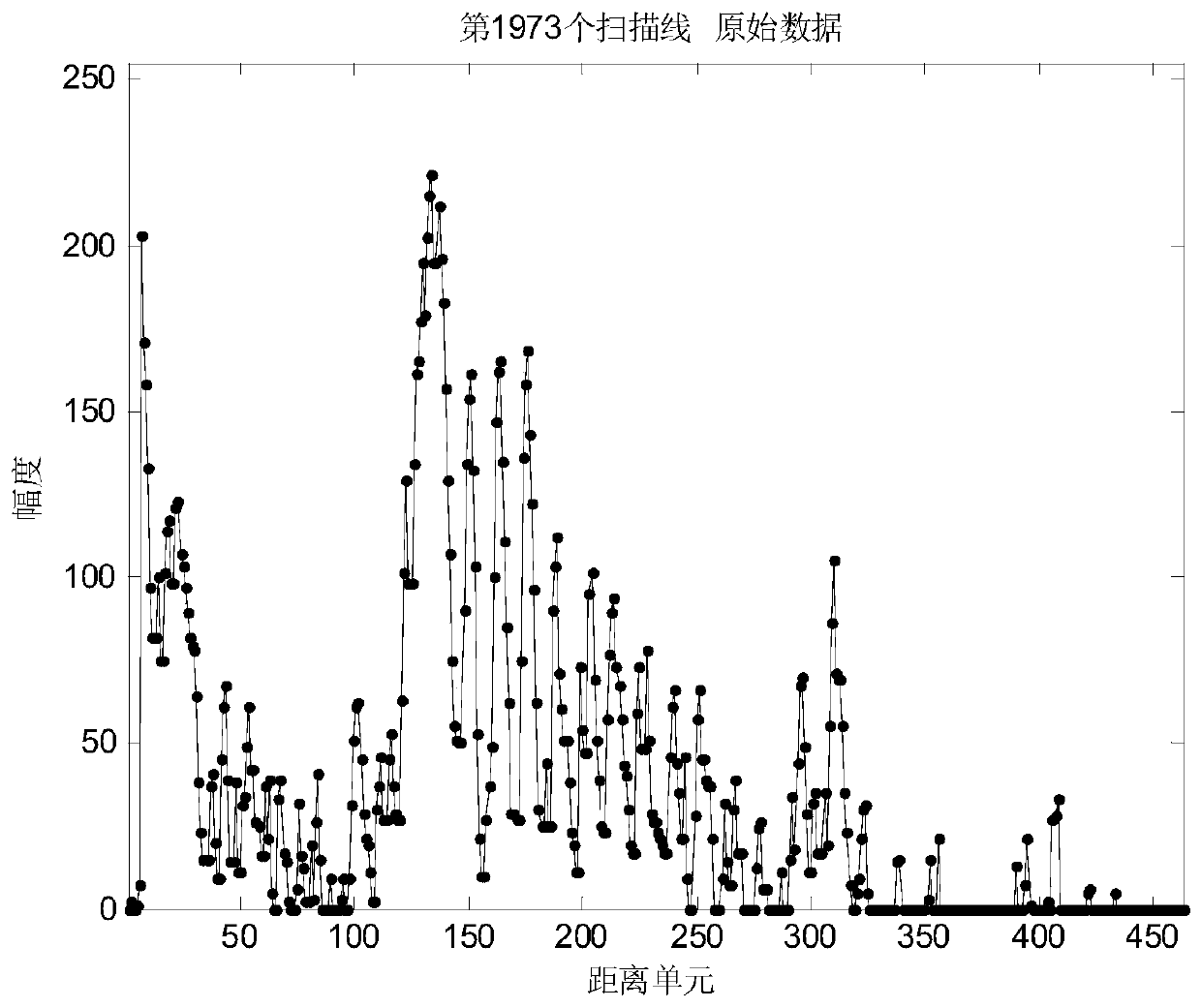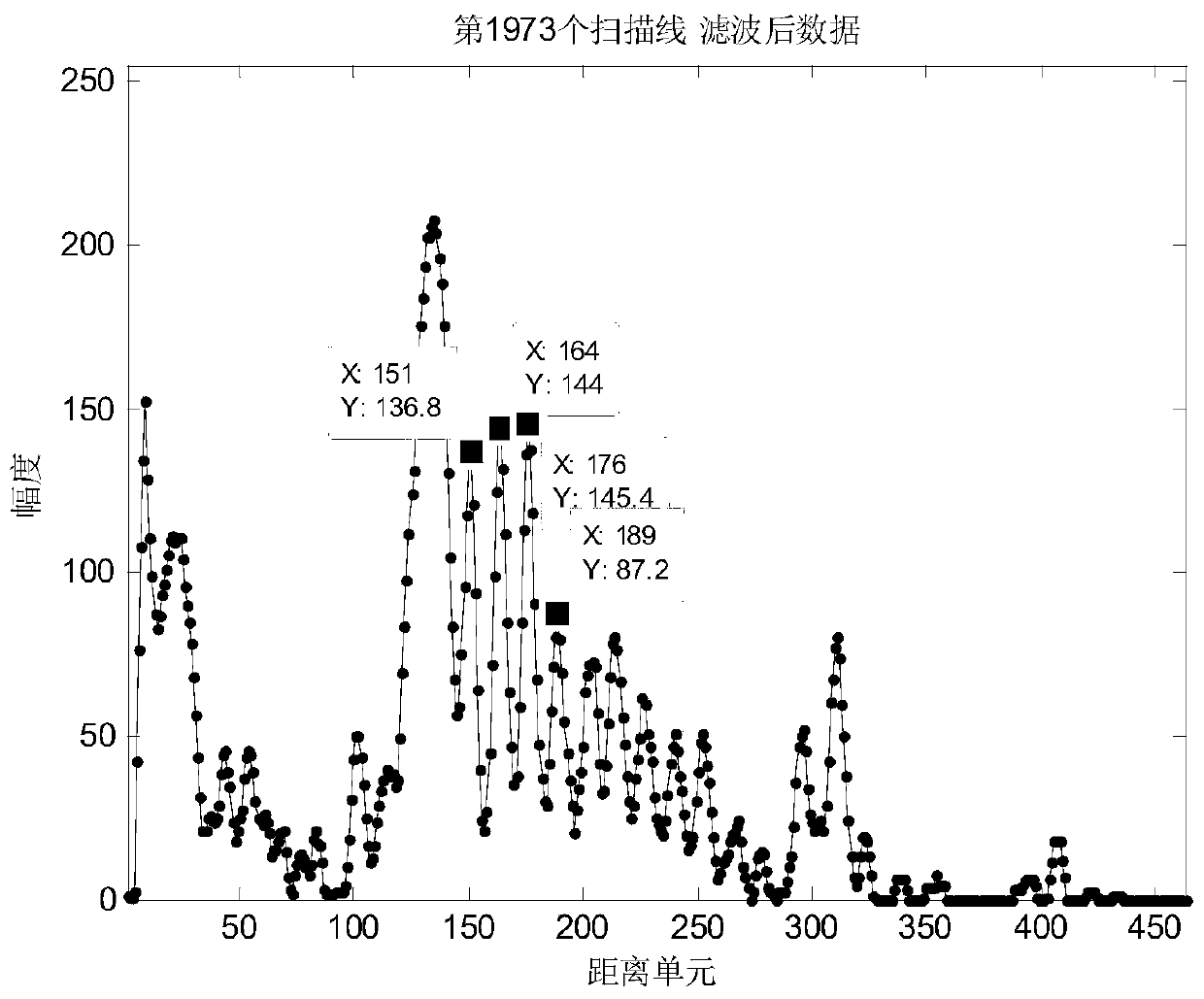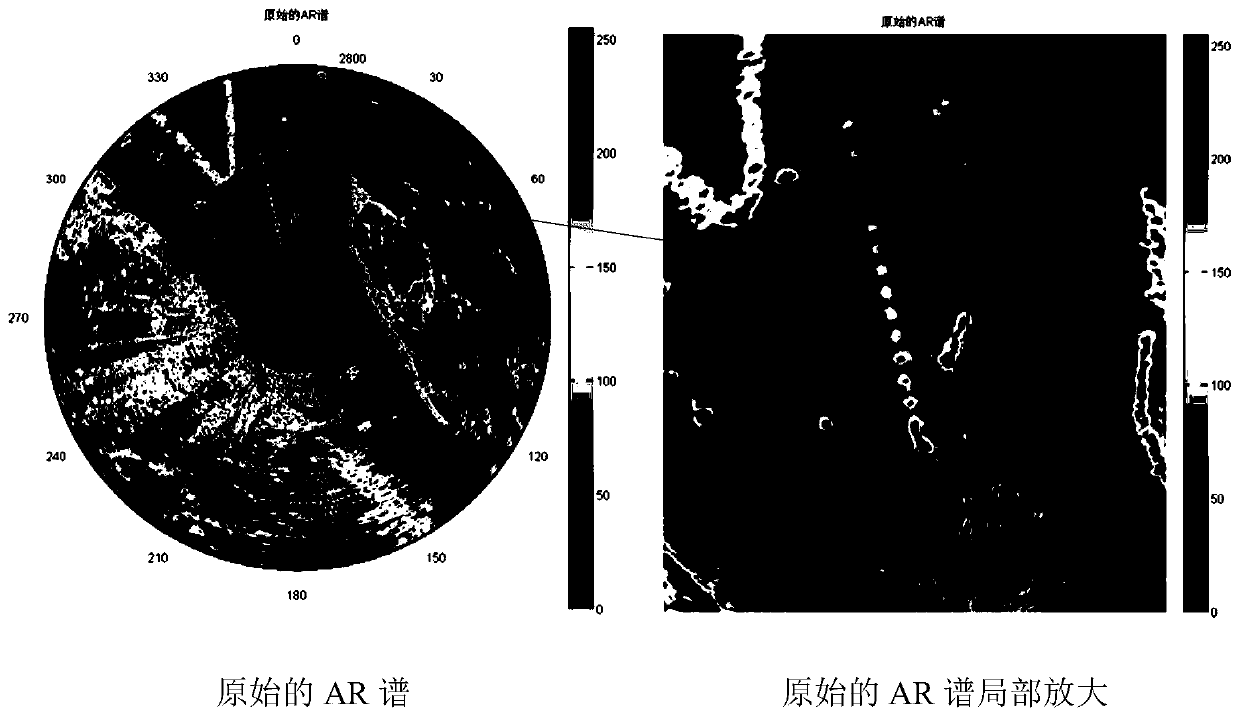A Method for Suppressing Multiple Reflection False Echoes in Navigation Radar
A multi-reflection, navigation radar technology, applied in radio wave measurement systems, instruments, etc., can solve problems such as excessive suppression intensity, residual false echoes, target loss, etc., and achieve the effect of suppressing multiple reflection false echoes
- Summary
- Abstract
- Description
- Claims
- Application Information
AI Technical Summary
Problems solved by technology
Method used
Image
Examples
specific Embodiment approach 1
[0029] Specific implementation mode one: combine Figure 7 , Figure 8 , Figure 9 Describe this embodiment, the specific process of a kind of navigation radar multiple reflection false echo suppression method of this embodiment is:
[0030] Step 1. The radar transmits the signal outward, and the receiver receives the echo signal after the radar transmits the signal and irradiates the target, performs mean filtering on the echo signal of the k-th direction along the distance dimension, and obtains the echo after mean filtering data;
[0031] The value of k ranges from 1 to the total number of scan lines output by the navigation radar; the total number of scan lines output by the navigation radar is a positive integer;
[0032] For example: if every 0.25° is a scan line, the total number of scan lines output by the navigation radar is 1440, which is equal to 360° divided by 0.25°;
[0033] Step 2. Extract the features of multiple reflection false echoes from the average fil...
specific Embodiment approach 2
[0041] Specific embodiment 2: The difference between this embodiment and specific embodiment 1 is that in the step 2, the mean value filtered echo data obtained in step 1 is subjected to multiple reflection false echo feature extraction to obtain echoes that meet the conditions Peak position and peak spacing; the specific process is:
[0042] Multiple reflection false echo feature extraction; the specific process is:
[0043] Step 21: Perform peak extraction on the mean-filtered echo data, and perform differential processing. The peak distance obtained after differential processing satisfies: peak distance>T 1 , isometric deviation ≤ T 2 , the number of equidistant ≥ T 3 ;Get the peak position and peak distance of the false echo satisfying the condition;
[0044] The peak extraction process is as follows:
[0045] Generate a matrix of the same size as the echo signal dimension to mark the peak value. The initial value of the matrix is 0. When the amplitude values of the ...
specific Embodiment approach 3
[0054] Specific implementation mode three: the difference between this implementation mode and specific implementation mode one or two is that: in the step four, target backfilling is carried out according to the threshold detection result and the echo signal obtained in the step three; the specific process is:
[0055] Extract the target feature X(i,j) from the matrix that stores the threshold detection result in step 3. The target feature X(i,j) includes the target starting distance unit, ending distance unit, maximum amplitude value and target length; i is the stored Target number, the value is a positive integer greater than 1, j is the feature of the target, j=1, 2, 3, 4, corresponding to the target start distance unit, end distance unit, maximum amplitude value and target length;
[0056] Backfilling two adjacent targets needs to satisfy formula (1) and formula (6):
[0057] X(i+1,1)-X(i,2)<=T_range (1)
[0058] T_range=mask_scale-X(i,4)-X(i+1,4) (2)
[0059]
[006...
PUM
 Login to View More
Login to View More Abstract
Description
Claims
Application Information
 Login to View More
Login to View More - R&D
- Intellectual Property
- Life Sciences
- Materials
- Tech Scout
- Unparalleled Data Quality
- Higher Quality Content
- 60% Fewer Hallucinations
Browse by: Latest US Patents, China's latest patents, Technical Efficacy Thesaurus, Application Domain, Technology Topic, Popular Technical Reports.
© 2025 PatSnap. All rights reserved.Legal|Privacy policy|Modern Slavery Act Transparency Statement|Sitemap|About US| Contact US: help@patsnap.com



